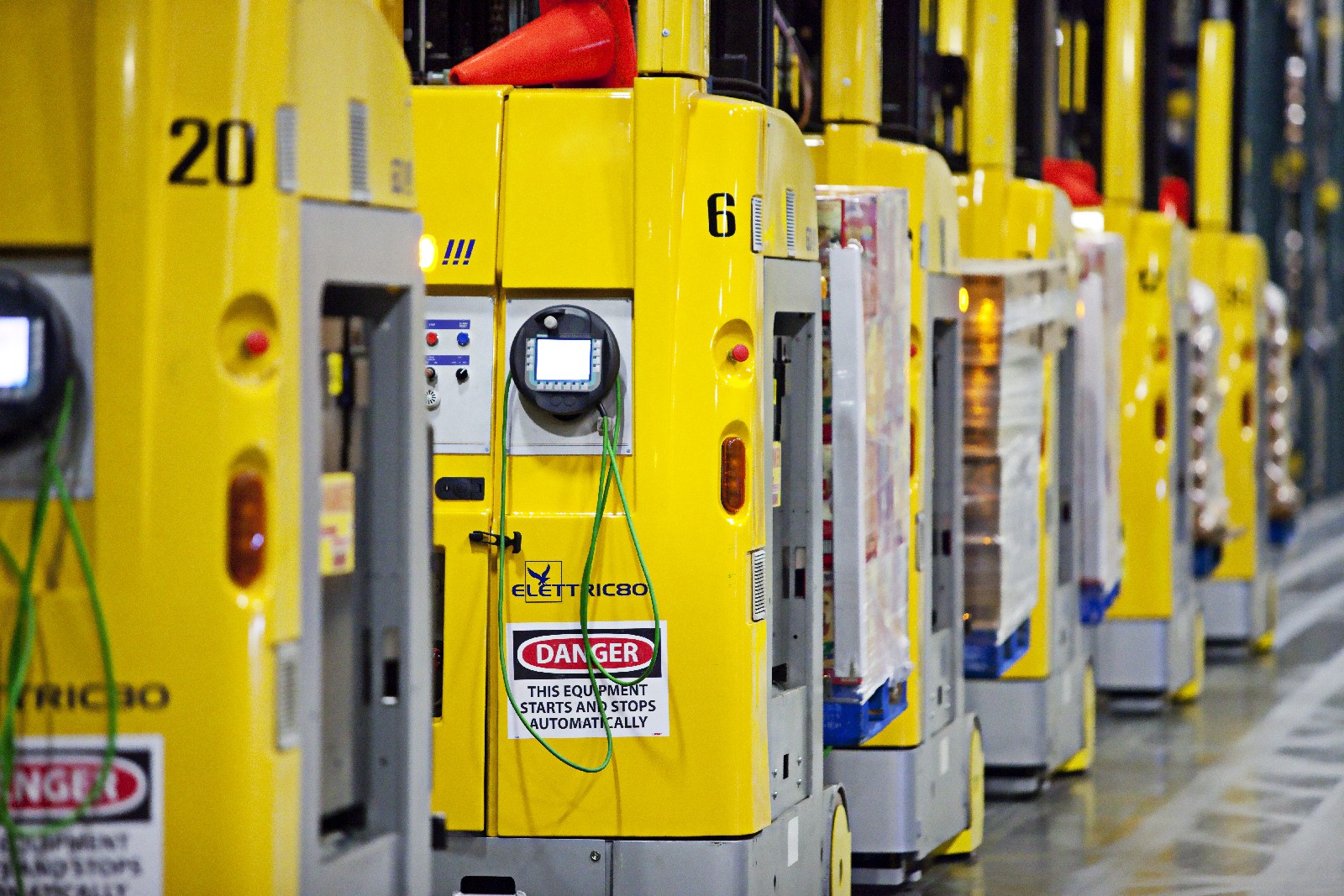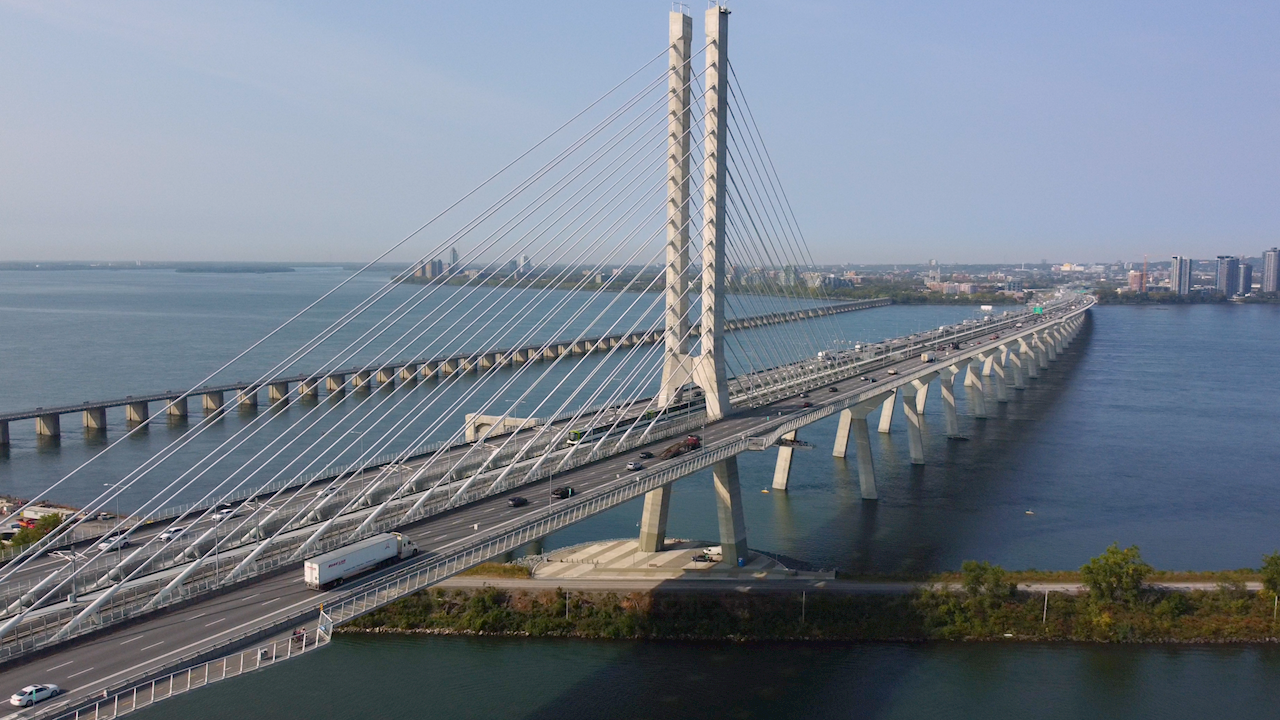
Thomas R. Cutler investigates the role of automated guided vehicles and the need for independent experts to facilitate their implementation in food and consumer packaged goods.
Suppliers of end-of-line automation and material handling in the food sector have a distinct scope of technology to consider, including various types of palletizing robots, stretch wrapping equipment, labeling systems, pallet control systems, and laser-guided automatic vehicles.
These solutions extend beyond AGVs and must contain software for scheduling, routing, monitoring and visualization of the complete end-of-line process. The food sector’s special requirements for hygiene, safety, and data tracking are essential components of effective system designs.
Automation equipment is capable of handling loads of raw material, work in progress such as beer, soft drinks, cereals, candy, snack foods, as well as finished goods. Based in Sellersville, Pennsylvania, Hesham Mahmoud, President of Strategic PM Solutions, Inc. (www.strategicpms.com), suggests, however, that many implementations fail to deliver what the customer expected. “More than 80 percent of food firms experience defective or inferior automation implementations because an objective material handling operations strategy and process solutions within the food facility have not been carefully analyzed and developed before selecting an AGV vendor.”
In-process automation implementations
Food and CPG firms that have already purchased an automation technology solution, often experience delays, resistance, and even implementation stoppage because the process and products were poorly conceived. An independent liaison between the internal client staff and the AGV vendor is frequently needed. An objective mediator, with knowledge and experience within the sector, saves months, even years, in the implementation and execution of best practices on the plant floor, distribution center, or warehouse.
A typical automation application may include a phase or multi-phases of product movements includingunloading raw material from trailers to receiving, to raw material from receiving to storage, as well as raw material from storage to work in progress (WIP). The phases also include finished goods from work in progress (WIP) to storage, finished goods transportation from storage to the shipping area and loading of finished goods from shipping area to the trailers.
The benefits of utilizing automation equipment and improved processes include reduced operating costs and optimized use of operations and facility space. Additional benefits include improved product quality, workplace health and safety, and reduced labor costs. Some plants and warehouses report improved quality of work for employees, increased production throughput, reduced waste and improved product-tracking.
“In the next 90 days, more than a thousand food, beverage, and consumer product goods companies will implement an automation solution in a manufacturing plant, distribution center, or warehouse,” commented Mahmoud. “Sadly, four out of five of these automation projects will be troubled, resulting in a waste in time, money, and resources. Only objective and experienced project management expertise can help avoid these disastrous and misguided implementations. There is often a lack of internal expertise or resource in project management and industrial automation.” AGV solutions providers, no matter how well intended, have an agenda to sell their products and solutions.
Increasing profits with AGV automation is best achieved by reducing costs related to supply-chain management. Exploring methods of optimizing transportation of raw materials, work in progress, finished goods and flow of return goods drives bottom-line results. Production issues, particularly workflow, can improve operational efficiency and employee productivity.
Integration of equipment and processes along with operational complexity and dealing with best practices also generate economic impacts for cost-justification of the AGV automation expense.
Elettric 80, based in Skokie, Illinois, is one of the AGV suppliers providing end-of-line automation solutions for the food sector. Technology helps companies cut cost and move product to and from the production area and out of the warehouse in a fast and effective manner. “Our goal is to work with customers to establish innovation and challenge the boundaries at the end-of-the-line. We are always looking to improve our proposition and offer the industry solutions which set us apart from other suppliers,” noted Johan Castegren, managing director, Elettric 80 SpA.
These are among the benefits available, he said:
• A rapid installation and start-up
• An immediate improvement in overall performance
• A safer work environment
• Lower maintenance costs
• Greater flexibility within the facility
• A quick return on investment
• The ability to perform real-time checks on load data
• An optimization of floor space
• Easy to implement expansion plans.
Mark Stevenson is vice president of business development for Egemin Automation, Inc., a global provider of automatic guided vehicle systems, material handling and automation solutions. For twenty years, Stevenson has worked with many of the world's largest corporations on the design and implementation of automatic guided vehicle systems, including two of the first automatic trailer loading systems in the United States, and he holds a patent as a co-inventor of ATL technology. Stevenson is recognized as one of the foremost authorities and subject matter experts on the design and application of automated trailer loading systems and warehousing automation with automatic guided vehicles.
Stevenson recently commented during ProMat 2011 that, “All guided vehicle solutions must be cost-efficient and made-to-measure. They must be fully automatic transport systems using unmanned vehicles. These industrial vehicles safely transport all kinds of products without human intervention within production, warehouse, distribution and shipping environments: the clear way to increase efficiency and profitability.”
These systems consist of reliable off-the-shelf components. However, Stevenson notes, “We always tailor our vehicles to meet client requirements to lift, rotate, and shift goods, fetch loads from racks, store products in deep lanes, transport product across long distances, deliver them onto conveyors.
“Compared to other automatic transport systems, our system is not bound to the floor which allows better use of the available working space,” he continued. “In addition, extensions or even relocations of the entire system can be easily achieved; systems also integrate with higher-level ERP and can be easily combined with other material handling systems like conveyors, stacker cranes and palletizing or packing machines.”
Increased safety and ergonomics
Facilitating conditions to consider include repetitive transports, multi-shift and 24/7 operations, as well as mid to long-distance travel and high-frequency throughput. Other factors impacting safety and ergonomics include material flows with a large number of buffer locations, complex production flows as well as transport to and from automated warehouses, WIP and production. Stevenson also noted the importance of looking at transport in challenging or less operator-friendly environments.
Mahmoud also suggests, “Maintaining up-to-date production processes, technology, and project management training are vital elements to consider in food and CPG companies. Other areas of cost containment can be found when examining on-going changes, needs and requirements of customers, and improving product quality and safety. We have seen huge value in assisting fast-changing operations environments and product movement from the material handling viewpoint.”
Extensive expertise in the material handling automation and strategic project management allows distribution centers, warehouse operations, and manufacturing plants to lower project costs and assist with production and processes challenges. These aspects must assist with the material handling transportation and automation solutions to improve and drive production, performance, and profitability.
Risk identification
When risk is applied to project management, six processes are used in project risk management, according to A Guide to the Project Management of Knowledge, PMBOK. These processes minimize the negative events.
§ Plan risk management
§ Identify risks
§ Perform qualitative risk analysis
§ Perform quantitative risk analysis
§ Plan risk responses
§ Monitor and control risks
“Risk generally falls into three categories: technical elements, project management, or business and external forces,” asserts Mahmoud. “Technological risks are the most crucial because they are the ones that measure project performance. Project managers have to ask if the project can deliver the customer’s goals, objectives, and if he/she can meet the specifications.”
Project-management risk deals with the amount of experience of the project managers, project team and how well the project is run, controlled, and finalized.
Few automation experts have the multi-disciplinary experience needed to drive a successful AGV implementation. Governing a variety of disciplines including all engineering fields, such as mechanical, software, and electrical, plus manufacturing, purchasing, customer support and aftermarket is why few independent consultants possess the technical skills needed in automation, management and operations.
* * *
Thomas R. Cutler is the President & CEO of Fort Lauderdale, Florida-based, TR Cutler, Inc, (www.trcutlerinc.com). Cutler is the founder of the Manufacturing Media Consortium of nearly four thousand journalists and editors writing about trends in manufacturing. Cutler is a member of the Society of Professional Journalists, Online News Association, American Society of Business Publication Editors, Committee of Concerned Journalists, as well as author of more than 500 feature articles annually regarding the manufacturing sector. Cutler can be contacted at trcutler@trcutlerinc.com or 888-902-0300.













